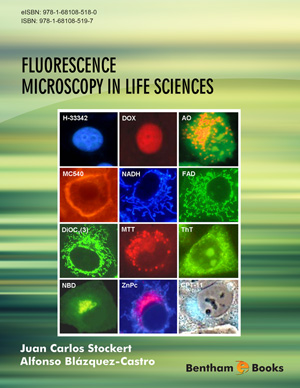Abstract
This Chapter deals with the labeling of biomolecules with synthetic or natural fluorochromes. In spite of the development of enzyme and gold protocols for biomolecular labeling, the use of fluorescent tags keeps on being important procedures applied in biomedical research. Covalently attached fluorophores are the most general linking type and they can be either synthetic (FITC, TRITC) or natural (GFP and analogues, phycobiliproteins). Generally proteins are not fluorescent, but they can be labeled with suitable fluorophores. However, there are natural fluorescent proteins that are increasingly applied in biomedical studies. In addition to lipid labeling with synthetic dyes, there are also natural and synthetic fluorescent lipids that are more physiological for studies in vivo (i.e. pentaene derivatives). General aspects on the type and use of fluorescent labels can be found in [1-8]. Relevant issues for fluorescent labeling are the type of fluorophore, its reactive group and binding mode, and the biomolecule to be labeled. Increasing interest is now devoted to the development of new methods for fluorescent labeling [9], mainly using nanoparticles [10, 11].
Keywords: Bimane, Bio-orthogonal reactions, Biotin, Boronic acid, Caged fluorophores, Chlorophyll, Cis-trans isomerism, GFP, Isothiocyanate, Lectins, NBD-ceramide, Nucleic acids labeling, Phallotoxins, Phycobiliproteins, Polyenes, PRINS, Taxanes, Tyramide signal amplification.






















